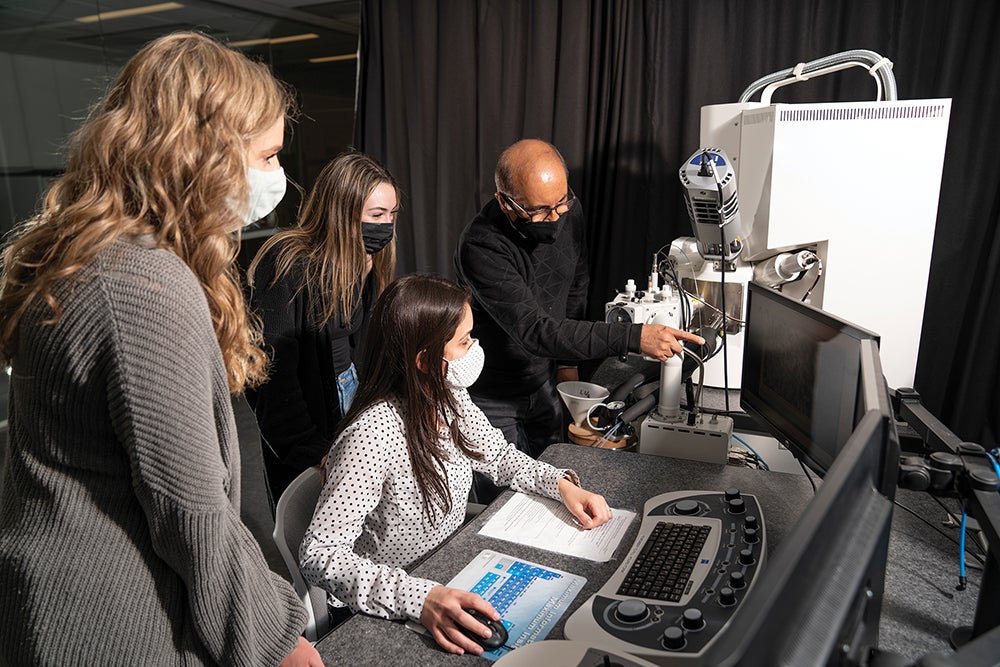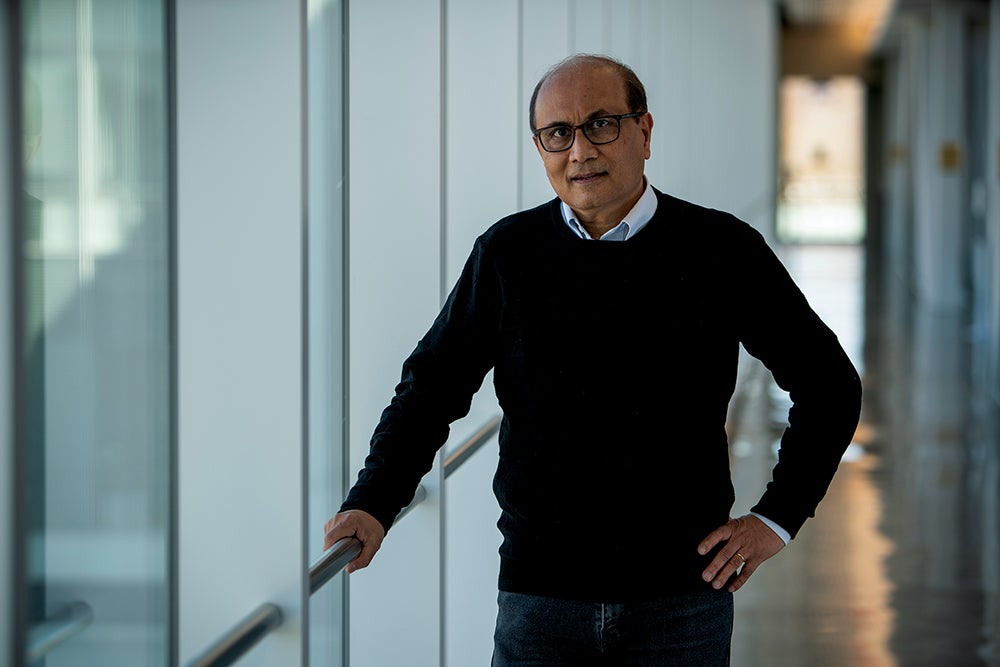Written by Allison Farrelly, ’16
University of Rhode Island (URI) Distinguished Engineering Professor Arijit Bose was flipping through a magazine when a disturbing statistic caught his eye — by the year 2050 there will be more plastics than fish in the ocean.
This environmental crisis has garnered enormous publicity in recent years. The term “ocean plastics” invokes arresting images of miles-wide patches of debris floating in the Pacific Ocean, plastic melting out of Antarctic ice, a grocery bag on the bottom of the deepest ocean on Earth, the South Pacific’s Mariana Trench, and turtles entangled in six pack holders and discarded fishing gear. With the COVID-19 pandemic, the waste can mean discarded surgical masks outnumbering jellyfish.
As Bose examined what expertise he could lend to fixing this problem, he noticed an incredibly small organism with a big impact on the food chain that was being overlooked: bacteria. When he looked closer, he found that bacteria already might be working to rid the ocean of plastic particles. His research group, in collaboration with that of Professor Anubhav Tripathi at Brown University, funded by a grant from the Rhode Island Science and Technology Advisory Council, have recently published their findings in two articles (below).

“Research is the best way to tackle problems that are crucially important to society.”
Arijit Bose, Distinguished Engineering Professor
At less than a single millimeter in length and thinner than human hair, most microplastics are undetectable to the human eye. Many commonly used plastics sink in ocean water, and they encounter a variety of species in the water column. To bacteria, a crucial player in fragile aquatic ecosystems, these sinking particles are foreign objects.
“If you disturb an ecosystem by doing something to these bacteria, it has implications that go far beyond the bacteria,” Bose said.
“This is a very, very important part of the food chain,” Bose explained. “As a disturbance in nitrogen levels can decimate larger species starting with their food source, phytoplankton.
“Bacteria are living beings, and they are extremely smart. If you expose them to something that is foreign to them, you can expect that biologically, they are going to do something that will help them face the new stressors.”
To test if cyanobacteria recognize microplastics in their environment, Bose recreated an ocean water environment in the lab with polystyrene and polyethylene particles and bacteria in a plastic suspension, and then imaged their interaction using electron microscopy, which can observe a much finer scale than a traditional microscope.
The findings surprised even Bose. Upon encounter with the microplastics, the bacteria excreted a sticky biofilm that allowed it to bind to the particle, the same way a barnacle binds to the hull of a ship.
“They need to attack this thing they don’t know,” Bose said.
Arijit Bose
“This is a very, very important part of the food chain, as a disturbance in nitrogen levels can decimate larger species starting with their food source”
After the biofilm formed, the bacteria sent out a signal to summon other bacteria to the foreign object. But contrary to the labs’ hypothesis that the bacteria may die upon encounter, instead the bacteria began to change biologically in order to better attack and degrade the plastic.
Tripathi and Bose began to sequence the bacteria’s DNA. A little more than a week after exposure to the stressor, the scientists began to see modifications. The bacteria’s DNA was changing to overexpress a gene that codes for an enzyme that degrades the plastic.
“Fish eat plastic and may die, but the bacteria respond to the plastic in an active way where they convert themselves and secrete an enzyme that degrades the plastic,” Bose said. “There’s a little bit of good news in the face of this very bad problem. We may be finding that the plastic is actually degrading — at least the stuff that is making its way into the water column — which is a good thing.”
Though the time scale of this degradation may be too long to be useful to humans, these initial findings have excited Bose to dive in deeper, as there may be ways to harness this bacterial action as an effective new tool to tackle this problem.
Published Research
- Interaction of Cyanobacteria with Nanometer and Micron Sized Polystyrene Particles in Marine And Fresh Water, T. T. S. de Oliveira, I. Andreu, M. C. Machado, G. Vimbela, A. Tripathi, A. Bose, Langmuir, 36, 3963-3969 (2020).
- The Response of Synechococcus sp. PCC 7002 to Microplastic Polyethylene Particles – Investigation of a Key Anthropogenic Stressor, M. C. Machado, G. V. Vimbela, T. T. S. de Oliveira, A. Bose, A. Tripathi, PLOS One 15, E0232745 (2020).
In his initial tests, he looked at spherical plastic particles, but wonders how the shape and size of microplastics could affect bacteria. In the coming months he also plans to test the interaction between different types of bacteria and different plastics including those made from renewable sources. His lab has added two undergraduate students to help expand his research.
“I love doing research,” Bose said. “For me, research is the best way to tackle problems that are crucially important to society.
“We are asking questions that no one knows the answers to. We struggle a little bit, we a take a few wrong turns and learn from them, and then we make some progress. For me that’s the most exciting thing that happens at a research university.”
